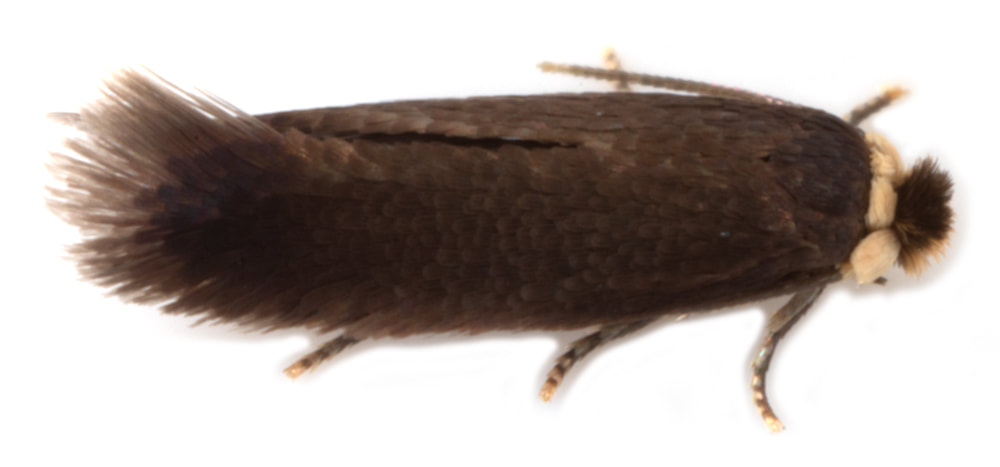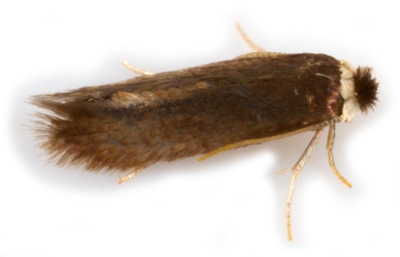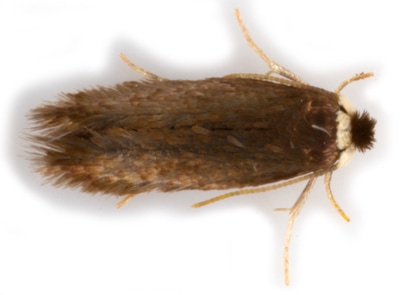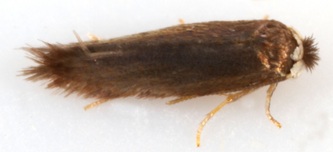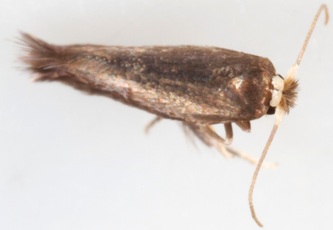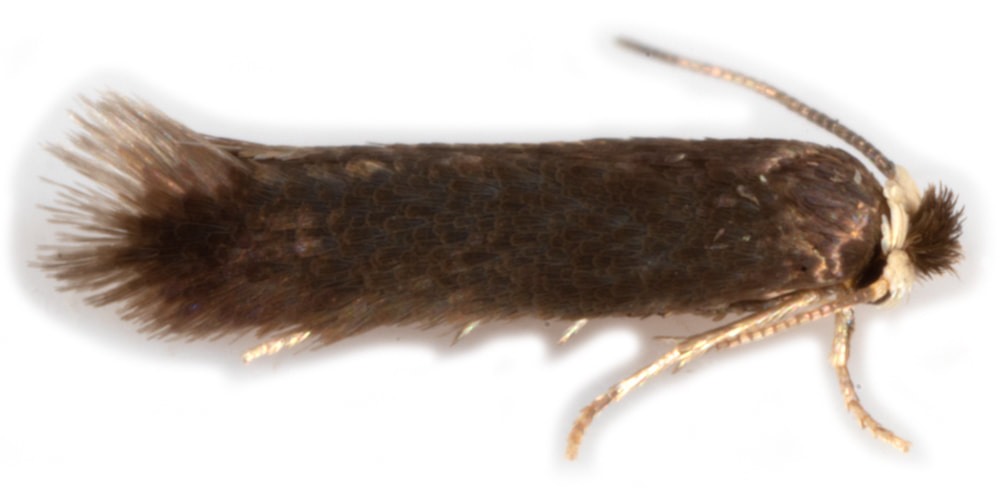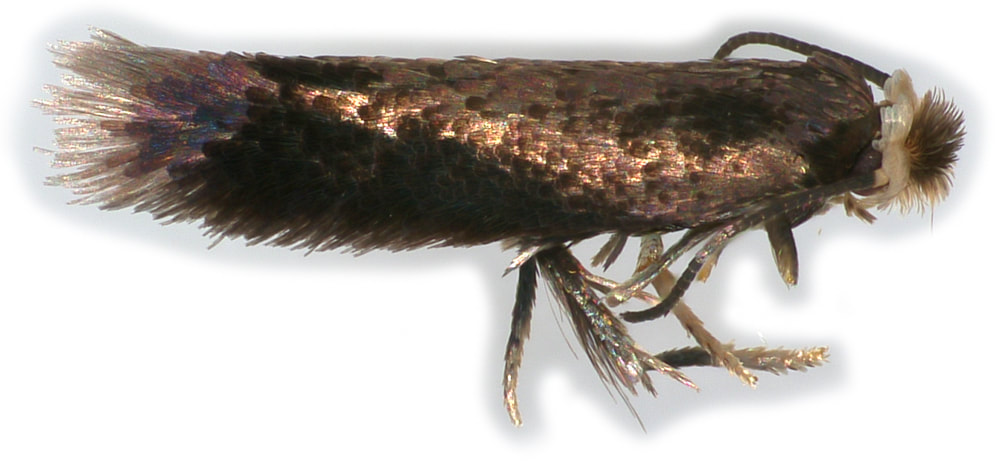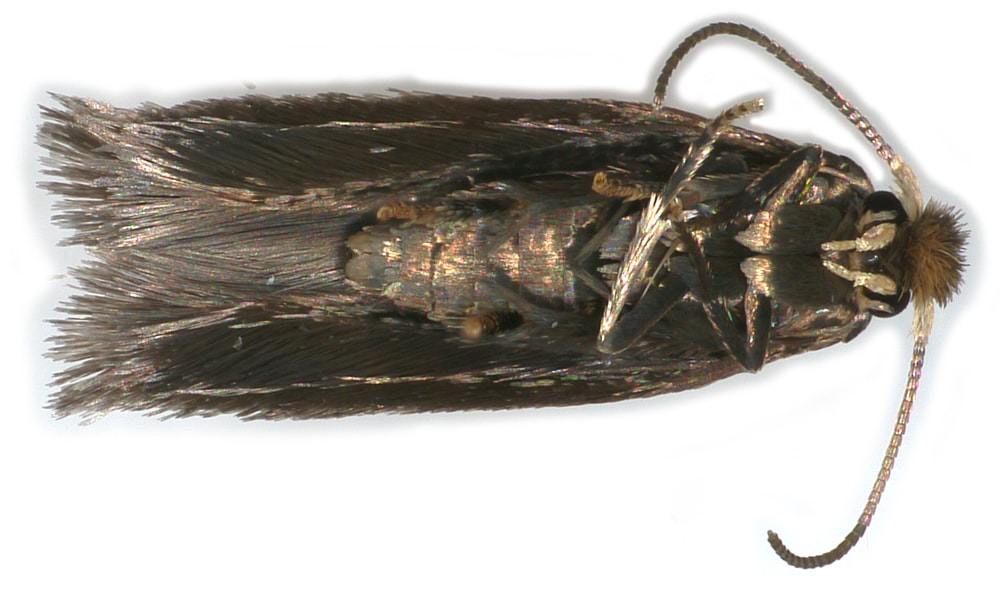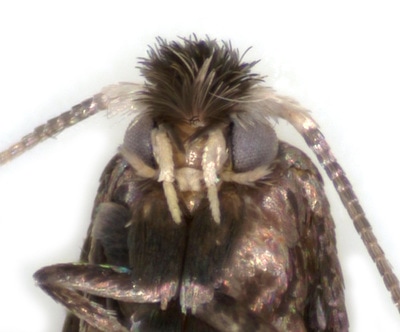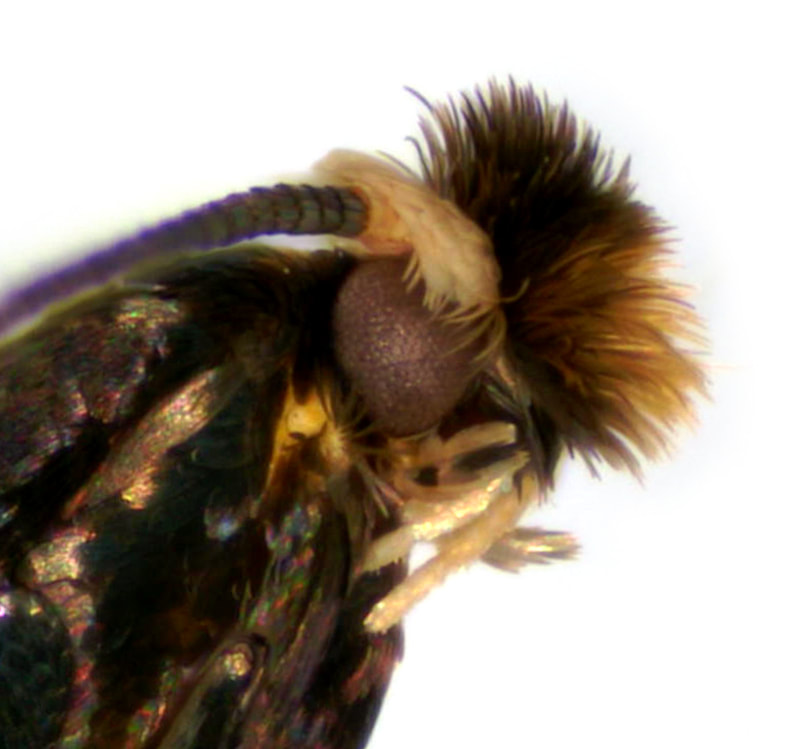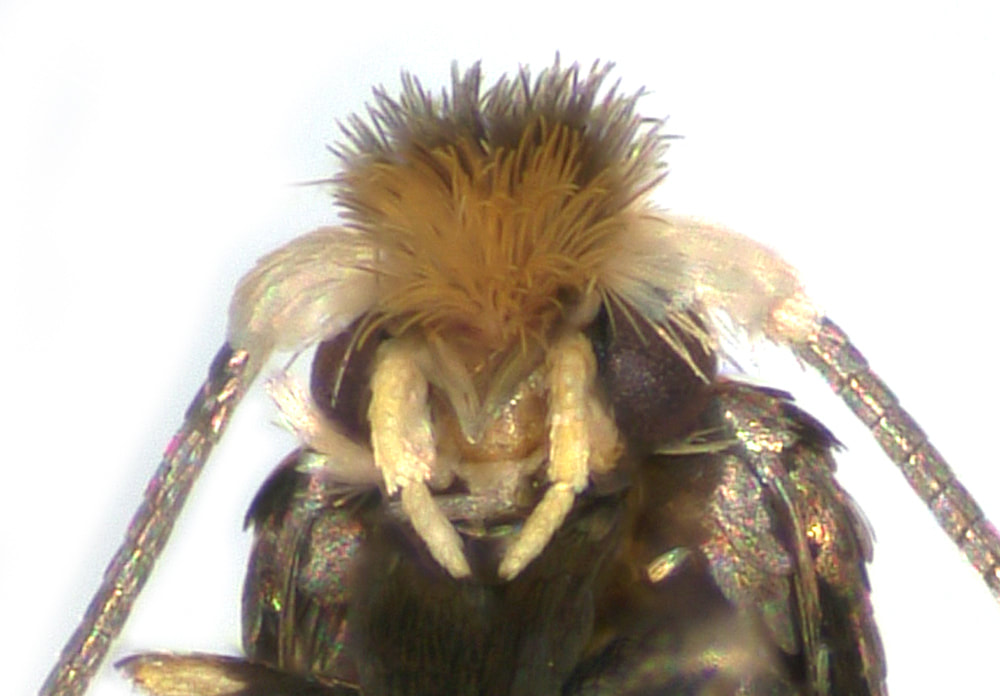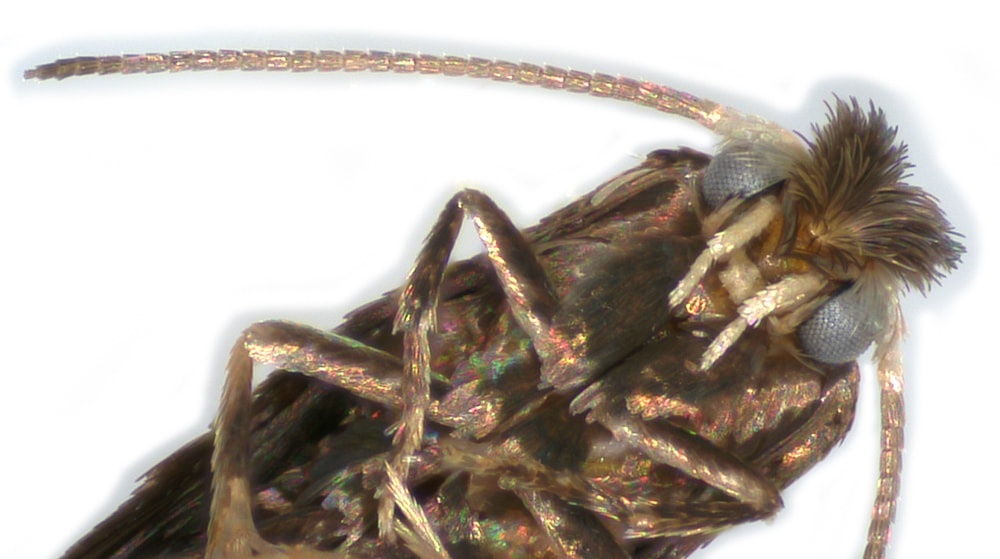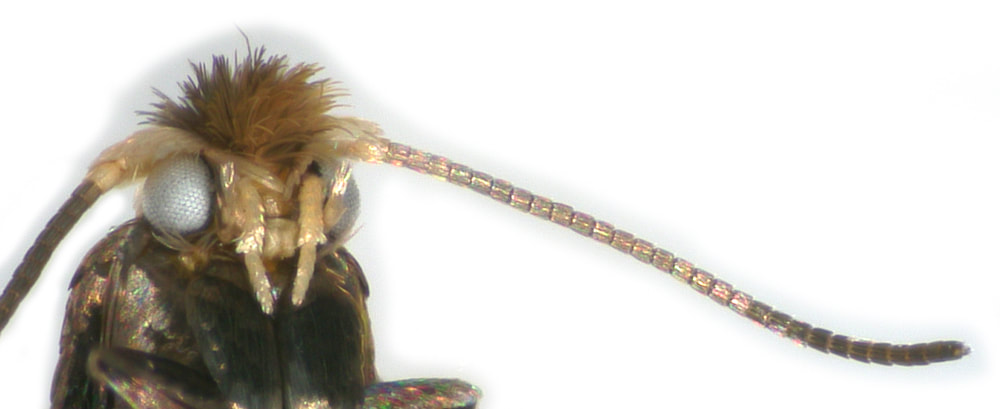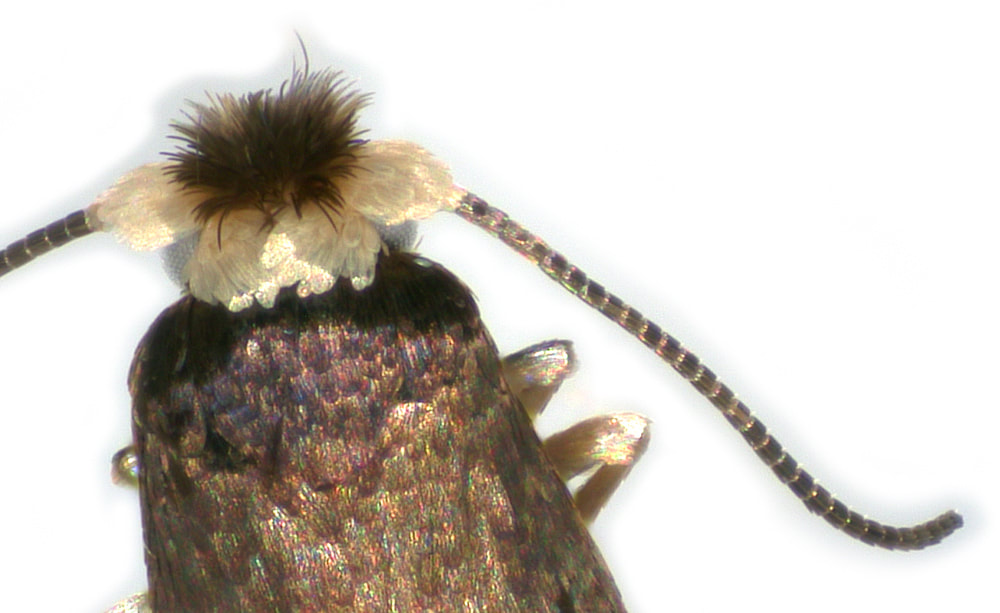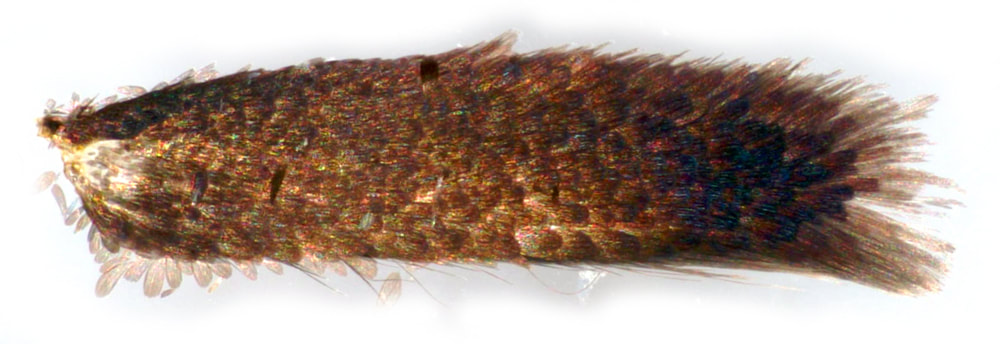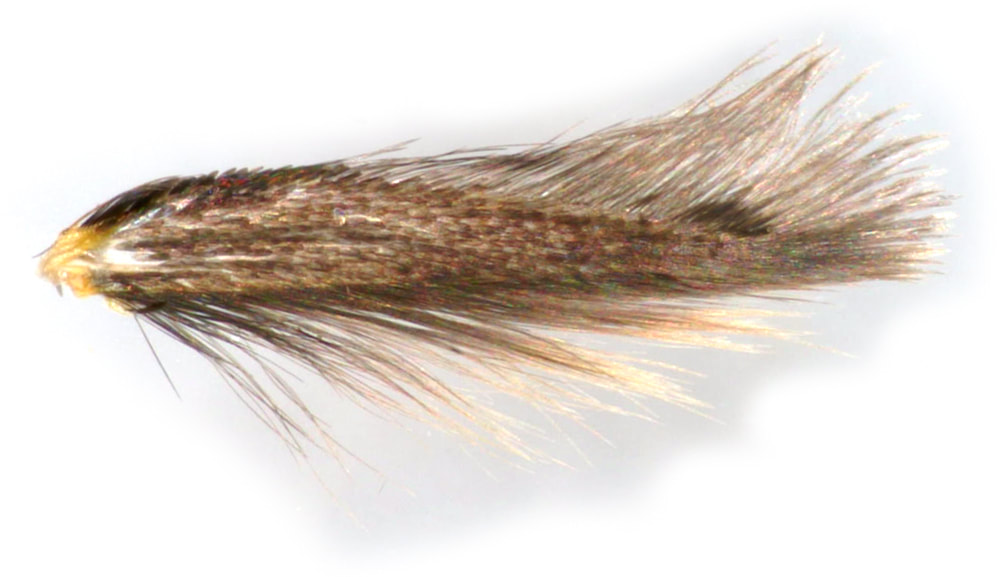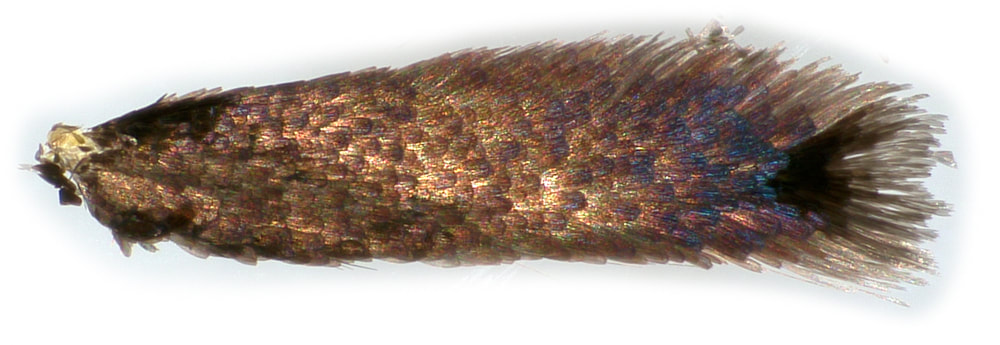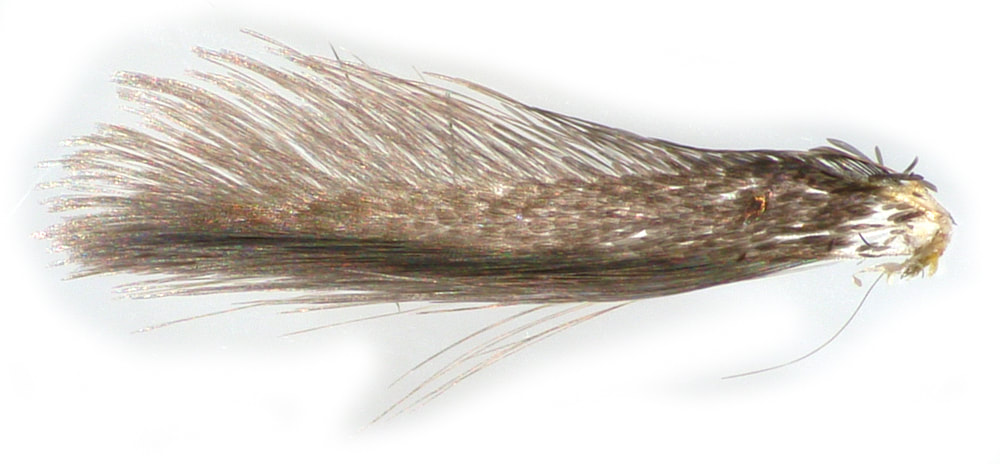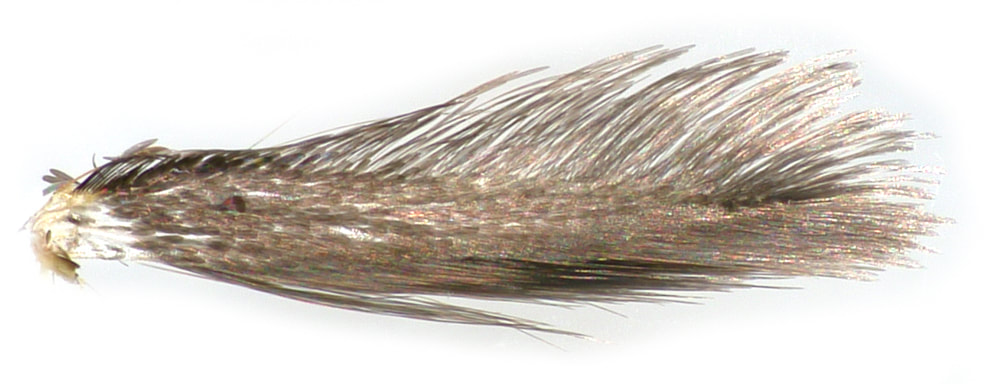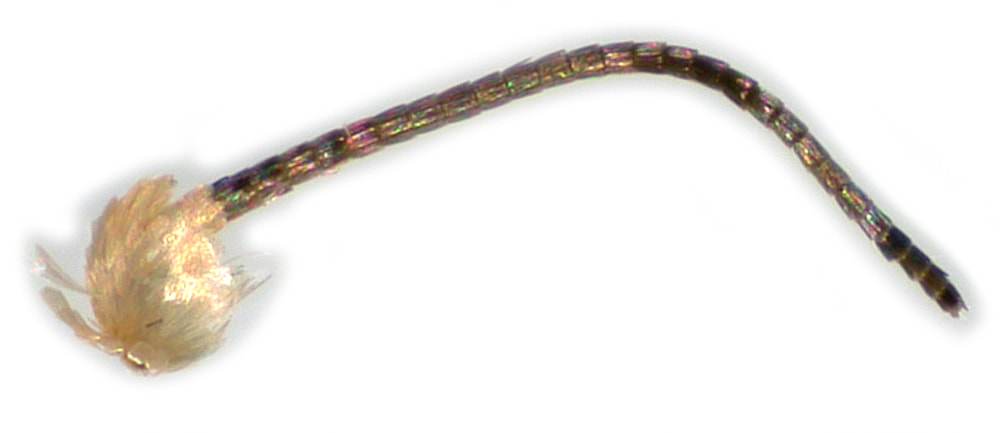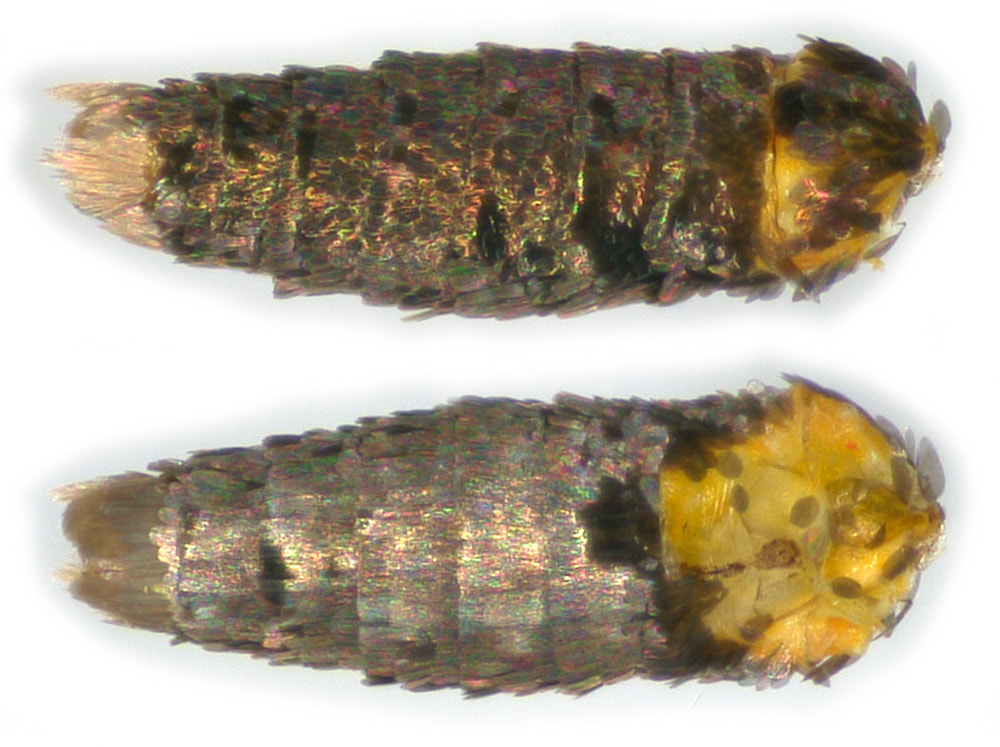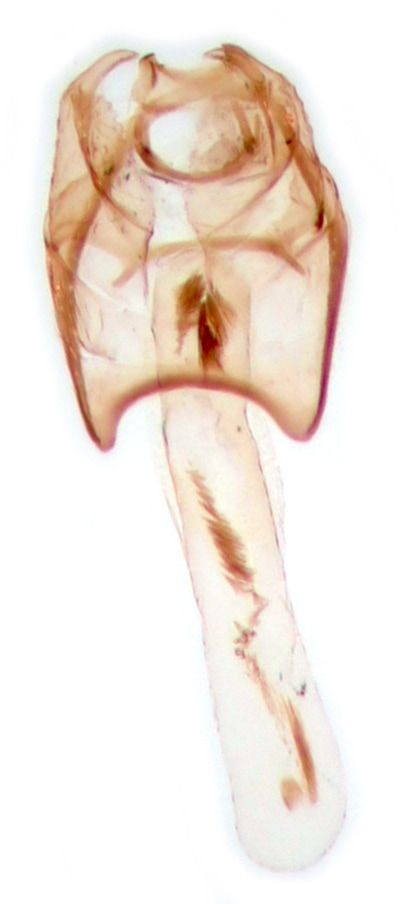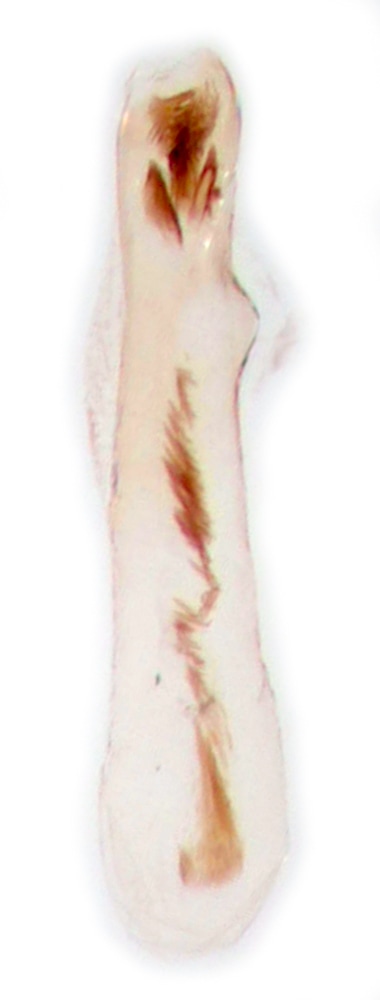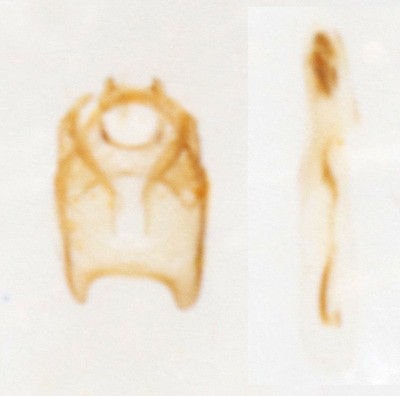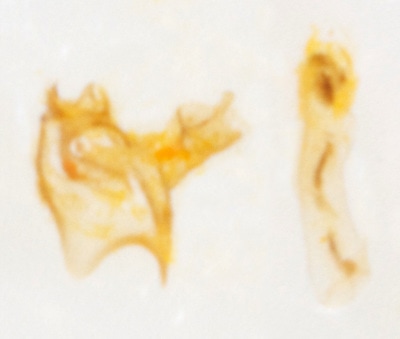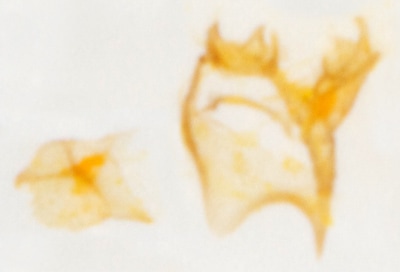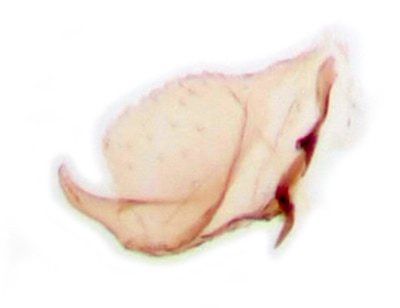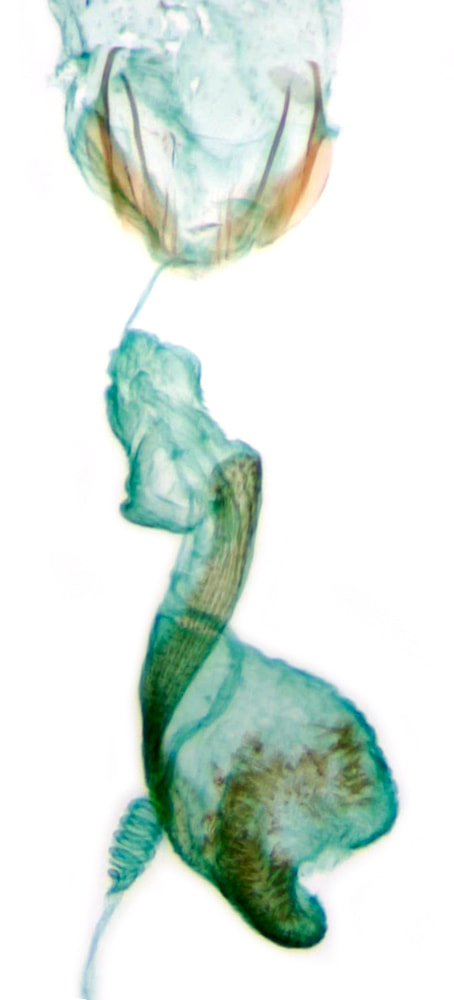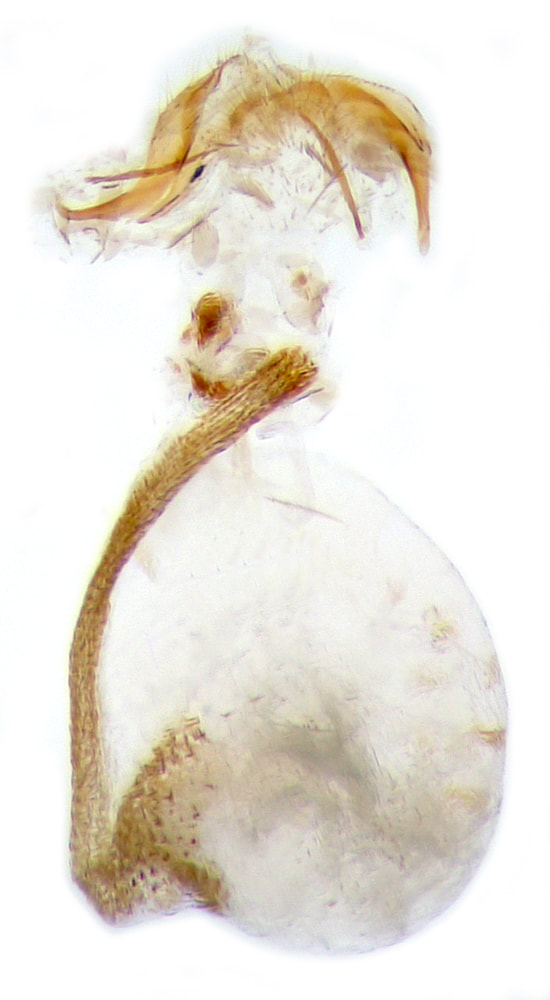|
NEPTICULIDAE : Nepticulinae : Nepticulini
|
04.062 Stigmella samiatella (Chestnut Dot)
ws: 5-7mm; bivoltine Jun, Jul-Aug; leaf mine in oak (Quercus spp), sweet chestnut (Castanea sativa) Jun-Jul, Sep-Oct; pRDB woodland in S & SE.England
ID: Forewing without pale markings; terminal cilia not white; head black or blackish-brown > 6 species
Keyed in MBGBI1 with a yellow frons but in my experience this may not be very apparent with just be a few yellow scales and when the yellow frons is clearly present this does not reliably exclude female S.atricapitella.
In male S.atricapitella/ruficapitella the hindwing has androconial scales in the cilia (not seen in these specimens).
S.minusculella/spinosissimae lack the purplish tinge at the forewing apex. S.anomolella f.fletcheri has an abrupt transition to the purple apex.
S.tiliae has the vertex black contrasting with a pale bronzy-brown forewing base and does not occur in E.England. In S.samiatella the vertex is concolorous with the forewing base.
Male genitalia: not illustrated or described in MBGBI1 for any of these species. S.atricapitella/samiatella only shown at dissection group. S.samiatella shows a series of fine cornuti along the length of the aedeagus with a cluster of more robust cornuti at its apex.
Keyed in MBGBI1 with a yellow frons but in my experience this may not be very apparent with just be a few yellow scales and when the yellow frons is clearly present this does not reliably exclude female S.atricapitella.
In male S.atricapitella/ruficapitella the hindwing has androconial scales in the cilia (not seen in these specimens).
S.minusculella/spinosissimae lack the purplish tinge at the forewing apex. S.anomolella f.fletcheri has an abrupt transition to the purple apex.
S.tiliae has the vertex black contrasting with a pale bronzy-brown forewing base and does not occur in E.England. In S.samiatella the vertex is concolorous with the forewing base.
Male genitalia: not illustrated or described in MBGBI1 for any of these species. S.atricapitella/samiatella only shown at dissection group. S.samiatella shows a series of fine cornuti along the length of the aedeagus with a cluster of more robust cornuti at its apex.
§1 Strumpshaw Fen, Norfolk; 24/08/2012; male; fw 2.8mm
§2 New Forest, Hampshire; 31/08/2013; male; fw 2.5mm
§3 Westcliff-on-sea, Essex; 15/07/2014; female
§4 Foulden Common, Norfolk; 14/08/2016; male
§5 Pound Wood, Essex; 20/05/2020; male; fw 3.2mm
§6 Pound Wood, Essex; 22/07/2020; female; fw 2.5mm
§7 Stour Wood, Essex; 06/06/2021; male; fw 3.2mm; to light
§8 Stour Wood, Essex; 06/06/2021; male; fw 2.9mm; to light
§9 Stour Wood, Essex; 11/08/2021; male; fw 2.9mm; to light
§10 Stour Wood, Essex; 11/08/2021; male; fw 2.8mm; to light
§11 Covert Woods, Kent; 09/05/2022; male (genitalia not checked)
§12 Covert Woods, Kent; 24/07/2022; female; fw 2.5mm
All images © Chris Lewis
§2 New Forest, Hampshire; 31/08/2013; male; fw 2.5mm
§3 Westcliff-on-sea, Essex; 15/07/2014; female
§4 Foulden Common, Norfolk; 14/08/2016; male
§5 Pound Wood, Essex; 20/05/2020; male; fw 3.2mm
§6 Pound Wood, Essex; 22/07/2020; female; fw 2.5mm
§7 Stour Wood, Essex; 06/06/2021; male; fw 3.2mm; to light
§8 Stour Wood, Essex; 06/06/2021; male; fw 2.9mm; to light
§9 Stour Wood, Essex; 11/08/2021; male; fw 2.9mm; to light
§10 Stour Wood, Essex; 11/08/2021; male; fw 2.8mm; to light
§11 Covert Woods, Kent; 09/05/2022; male (genitalia not checked)
§12 Covert Woods, Kent; 24/07/2022; female; fw 2.5mm
All images © Chris Lewis
Page published 14/02/2013 (§1) | §2 added 15/11/2013 | §3 (female genitalia) added 21/07/2014 | §4 added 19/04/2017 |
text amended 04/01/2021 | §5 added 19/01/2021 | §6 added 01/02/2021 | §7&8 added 28/11/2021 | §9&§10 added 10/12/2021 |
§11 added 21/08/2022 | §12 added 21/12/2022
text amended 04/01/2021 | §5 added 19/01/2021 | §6 added 01/02/2021 | §7&8 added 28/11/2021 | §9&§10 added 10/12/2021 |
§11 added 21/08/2022 | §12 added 21/12/2022
